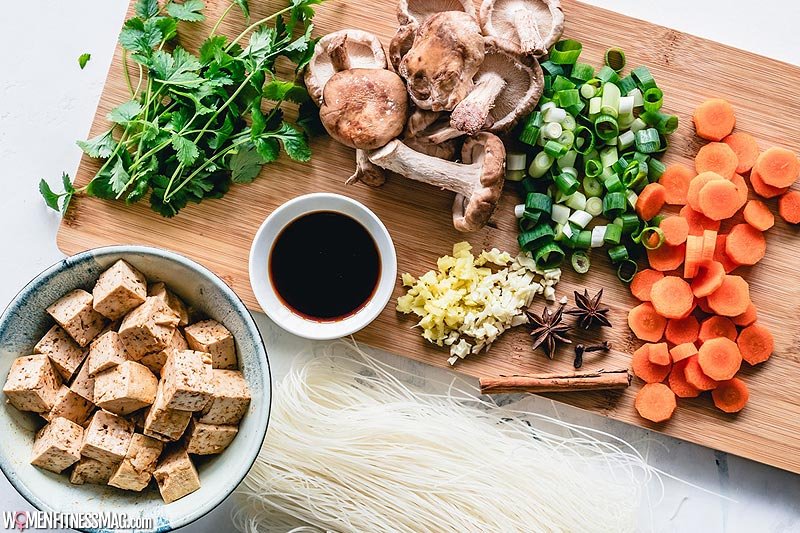How to Adjust Recipes Based on Ingredients You Have Available : Many of us are excellent at following instructions but might struggle a little bit more once our own decision making comes into play. This is unfortunate, as there are many situations where a little bit of creative ingenuity can be key.
Cooking is one such venue for this kind of behavior. You have a few of your favorite recipes, but you’re missing one or two of the key ingredients. Or you’re making a meal to share with someone else, but they have a dietary restriction you need to workaround!
Knowing how to make recipes based on ingredients you have or can use can be key in this kind of scenario. However, this is a skill that takes some work to learn.
Read on, and we’ll walk you through what you should know about adjusting recipes.
The Broad Approach
There are a lot of different reasons why a person might want to adjust a recipe. As we’ve mentioned, you might just not have or two of the keys you need but don’t want to have to run out to the store.
You might be trying to work around someone’s dietary restrictions (or your own!) or you might be trying to make a more healthy version of something you do actually have the ingredients for. If you’re going to start adjusting the recipe, it’s essential that you understand what your goal in the change is.
You’ll likely go about what you do next with different steps in mind depending on what you’re attempting to accomplish. Having a clear goal is the number one step to successfully adjusting a recipe.
Failure to really land on what you’re trying to do can send you into no man’s land and have you end up with a meal for no one.
Once you have a goal in mind, it’s time to get started in changing up the recipe in front of you. You’ll first need to highlight the source of the problem.
These problem ingredients would be what you’re missing, what you can’t use, or what you find to be terribly unhealthy, like something with lots of sugar or fat. Determine what the clear alternative to these problem ingredients would be. If you’re trying to make a meat dish vegetarian, switch stuff out for tofu or extra veggies.
Use low-fat substitutions in place of cholesterol-raising ingredients, or see what you have that can stand in for what you’re missing. As long as something is an equivalent enough replacement, you likely won’t even have to alter the recipe all that much.
You can always keep your bariatric multivitamins on standby if you need help digesting it all afterward.
Replacing In Meat Recipes
One of the most common recipe adjustments is when making meat-based dishes. There are many cases where one has run out of their favorite protein or are forgoing meat in favor of vegetarian preparation.
Luckily, changing a recipe to be vegetarian-friendly is not so much of a difficult task. You can swap out meat stock for vegetable stock or mushroom stock and the recipe will almost do itself!
If a recipe calls for bacon and you don’t have any, it’s worth considering smoked paprika instead, which can still provide a somewhat smoky flavor. If you want the true meat-y feeling without actual meat, you can’t beat tempeh bacon.
Similarily, tempeh, tofu, and seitan are all adored meat supplements that you can insert into any traditionally meat-based dish.
When Cooking With Dairy
Another big recipe replacement focus is recipes that rely on a large number of dairy products. It always seems like you’re running out of milk or eggs in the house, and making many things without these can be difficult.
There are also very many lactose-intolerant people out there and they need to eat meals without the presence of these dairy products. While that may sound difficult at first, it certainly isn’t impossible.
In almost all recipes, you can swap out the milk for some of the popular alternative varieties hitting shelves in stores (and likely your own pantry). The same almond or soy milk you put in your coffee can be used to replace traditional milk in most recipes.
If you’re making a recipe that features sour cream, there a few ways to work around that as well.
Avocado makes a splendid substitute in most sour cream recipes, as it is just as creamy but with an arguably even better taste.
The nutritional yeast you have in your pantry might also serve well as a substitute for cheese if you’ve run low. It can add a savory topping to most dishes without bringing dairy and animal products into the equation.
It’s Not Butter!
One of the most difficult yet common cooking situations people find themselves in? A lack of butter. Having to put a recipe together without butter can seem really hard, as butter is one of the basic building blocks of many baked goods.
However, there are some paths you can take.
Vegetable shortening can actually work as a great butter replacement in most pastries and baked goods. Canola or coconut oil is also a solid replacement if you’re out of the real thing.
Making Recipes Based on Ingredients You Have
Too often, we’re forced into making recipes based on ingredients we have in our possessions.
No matter what situation you find yourself in, being able to be flexible in the kitchen can be a huge asset.
Need more Diet, tips and tricks? Check out our blog for more.
How to Adjust Recipes Based on Ingredients You Have Available
recipe maker enter ingredients, find recipe with ingredients you have, recipes by ingredients app, super cook, what can i make for dinner with these ingredients, healthy recipes with ingredients i have, browse recipes by ingredients, ingredient search all recipes,




